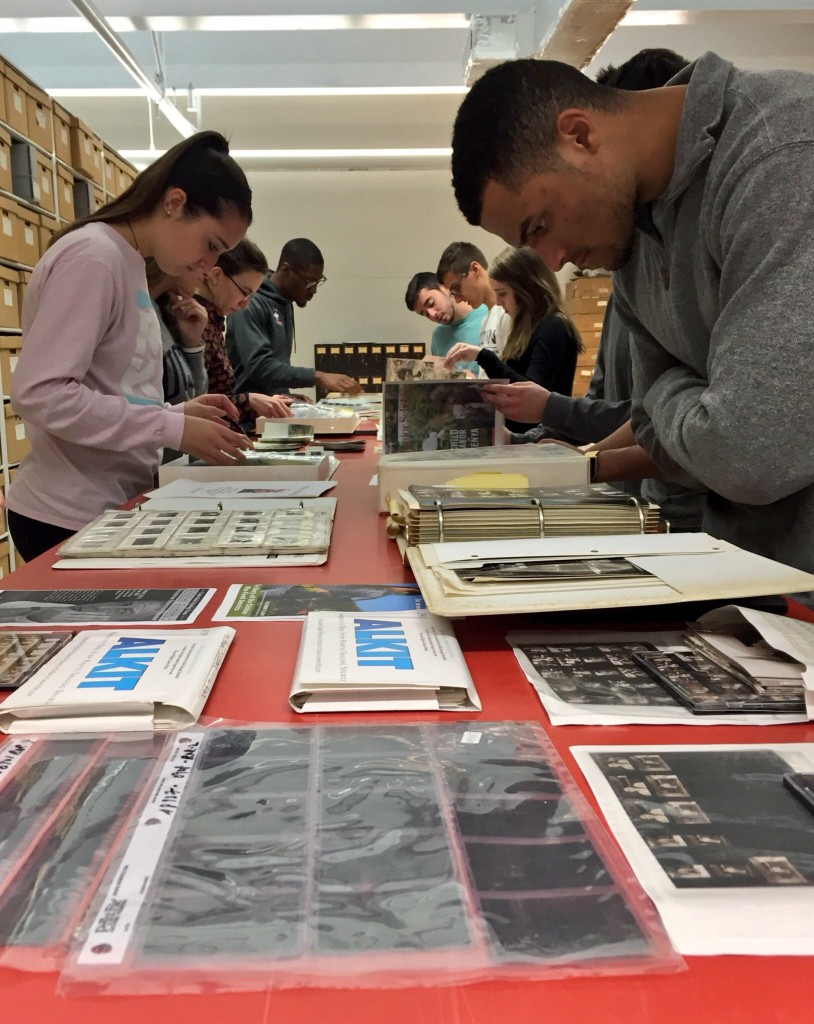
Students from Prof. Anna Lindemann’s Motion Graphics I course explore the Stolen Childhoods Collection, part of the U. Roberto (Robin) Romano Papers.
At the end of October, I was delighted to help facilitate a class visit to the Thomas J. Dodd Research Center, along with Graham Stinnett, the Archivist for Human Rights Collections and Alternative Press Collections at the Archives & Special Collections Department. Digital Media & Design Professor Anna Lindemann brought her Motion Graphics I course to see the U. Roberto (Robin) Romano Papers in person; the two classes were able to get a look behind the curtain of the Stolen Childhoods collection, to see and handle the physical materials and to learn some context surrounding the digital collection that they were already familiar with.
Professor Lindemann charged her students with exploring the application of motion graphics to still photographs, and then added the challenging component of upholding the intentions of a collection dealing with the gravity of child labor. To Lindemann, it was integral that the students experience the physicality first-hand, and were able to learn more about the motivations behind Romano’s work.
“Working with the Robin Romano collection was eye-opening. Seeing his life-long devotion to photographic art form as a way to raise awareness about child labor definitely made the class and me reflect on our own modes of working and the potential significance of our work. There was something especially striking about seeing his boxes upon boxes of work prints, negatives, photographs, and hard drives, including one of his hard drives labeled “not working.” This brought to mind so many of the aspects that we grapple with in digital media classes: the great mound of (often unseen) work behind a single effective image, and the capacity for an image or animation to be at once impactful and ephemeral.” – Professor Anna Lindemann
As gratifying as that was to hear, I was equally excited to see the results of Professor Lindemann’s project! We were able to select a handful of pieces from the finished work, which were then stitched together into a short video to showcase the project. The students selected for inclusion, in order of appearance, are David Kerr, Ariff Jeff, Bridget Smith, Chris Nista, Katherine Sawosik, Nick Bartos, Michael Dozois, Henry Stein, Patrick Belanger, and Shanna Surena-Mattson. There were many impressive pieces, and it was hard to narrow it down; all of the students’ individual work, as well as the full project description, can be viewed on the class websites:
Motion Graphics I, Monday/Wednesday
Motion Graphics I, Tuesday/Thursday
As a photographer, School of Fine Arts alum, and Assistant Archivist dedicated to this collection, the reaction that the classes had to the collection was just as profound as I had hoped it would be. Over the months that I have been working through the Romano Papers, I have continuously felt that it is shifting my perspectives on many areas of my life and my work. Speaking with Professor Lindemann and her class about the collection gave me confirmation that this work is already starting to have an impact here at the University of Connecticut.
